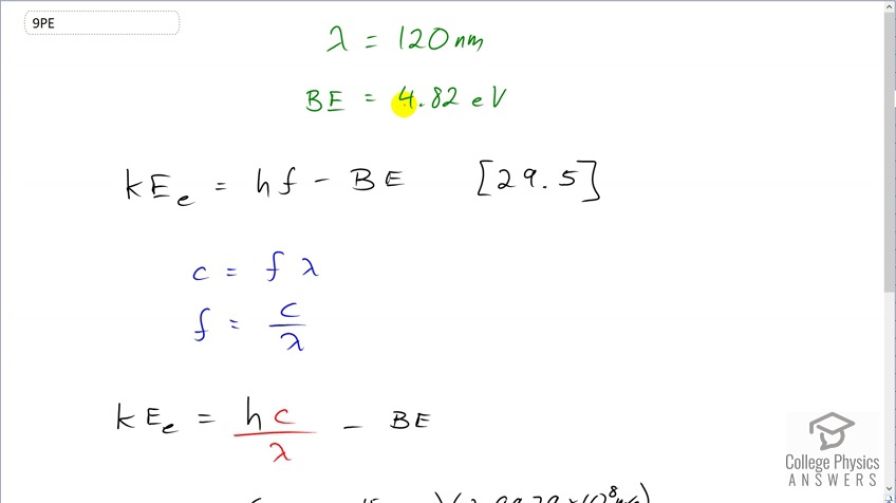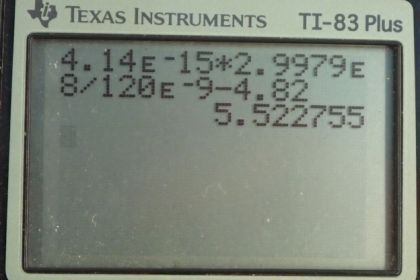Question
UV radiation having a wavelength of 120 nm falls on gold metal, to which electrons are bound by 4.82 eV. What is the maximum kinetic energy of the ejected photoelectrons?
Final Answer
Solution video
OpenStax College Physics for AP® Courses, Chapter 29, Problem 9 (Problems & Exercises)

vote with a rating of
votes with an average rating of
.
Calculator Screenshots
Video Transcript
This is College Physics Answers with Shaun Dychko. Photon's with a wavelength of 120 nanometers are incident on gold which has an electron binding energy of 4.82 electron volts. This formula [29.5] tells us what the maximum kinetic energy of the electron is, given a certain frequency of photon. and that's Planck's constant times the photon frequency minus binding energy. Now, we are given wavelength though so we have to use our wave equation to substitute for f in terms of λ. So the speed of the wave, which is light, equals the frequency times wavelength and then we'll divide both sides by λ to solve for f. So f equals c over λ. So replace f with c over λ in this equation for the maximum kinetic energy of the electron. So we have Planck's constant times the speed of light divided by the wavelength—120 times 10 to the minus 9 meters— minus the binding energy of 4.82 electron volts and this gives 5.52 electron volts is the maximum kinetic energy the electron could have. Now, if you want to make calculations slightly easier with less button pushing, we could have written this product on top as 1240 electron volt nanometers; this is given to us as [29.14] in the textbook, in which case, the denominator would have to be written as 120 nanometers and if you do 1240 divided by 120 minus 4.82, you'd get the same answer.
